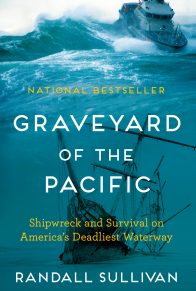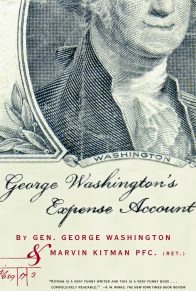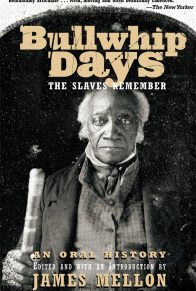[1]The making of the prefident technically took place in New York on April 6, 1789, when they opened up the ballot box in the Electoral College and counted the votes. But it actually began in Philadelphia, in June 1775, at the Second Continental Congress. The shot heard around the world had been fired at Lexington on the nineteenth of April. The British had marched back to Boston from Concord, taking terrible losses on the road. Since April the king’s army had been under siege in Boston. And now the delegates were debating the question of who might lead the rebel troops surrounding the regulars.
George Washington is one of sixty-three delegates, or congressmen, elected or appointed by the thirteen states. He is not a candidate for general in the election, which is to take place after the debate. He is sincere about it. George Washington, everybody knows, never told a lie. So far as he knows, he isn’t running for anything.
But he’s the one wearing the uniform. All of the other congressmen are in brown homespun or black. You couldn’t miss him.
He’s the tall, quiet gent in the resplendent outfit, someone who is watching the proceeding would know. He is a real standout.
It’s hot in Philadelphia in mid-June. Muggy. Just the kind of weather the Pennsylvania mosquitos love. They are as big as the Mayflower.
The moist heat is unbearable. Even the mosquitos sweat in eastern Pennsylvania. Instead of the bald eagle, there is talk thatthe national bird should be the mosquito. They come from New Jersey, William Penn explains.
It’s very close in the State House where the session is taking place. It is one of Philadelphia’s noblest buildings downtown, ranking with the Alms House, Pennsylvania Hospital, and the First National Trust Bank Building, founded by some of George Washington’s political associates and cronies.
The tourists would come from miles away to visit the State House and watch their congressmen in action, if the meetings were open to the public.
There is no air-conditioning. The heat is miserable. But the windows are closed. So are the doors. The managers of the Congress have ordered the doors closed for secrecy purposes. The first order of business when the session opened on May 10 was closing the doors.
The second is electing a general.
The debates of the Second Congress involving the election of the nation’s first commander-in-chief, the most powerful office in the land–the stepping stone to the prefidency–are secret, banned to the press. Those who would try to prevent the press from reporting the news in a democracy today are very much in keeping with the founding fathers’ thoughts on open debate. Virtually all legislative sessions were secret. Open deals openly arrived at are not in the spirit of the revolution. Secret negotiations in closed, smoke-filled rooms are already the American way. Closed doors also make it easier to avoid a draught, or draft.
The tall, quiet, forty-three-year-old planter in the uniform is a congressman from the Fairfax district of Virginia. He is wearing the uniform of the Virginia militia. He is a colonel. All Virginia politician-planters are called colonel or major. While Washington was a veteran of the so-called French and Indian War,* the title had as much prestige then as “esquire” does today.
Colonel Washington, like many other military men, preferred to be addressed by his military title, from his middle twenties to the time of the revolution.1 (I felt the same way as PFC Kitman.)
The Virginia delegation of seven was the most powerful in the Congress. It had the most celebrities, along with Massachusetts. And Colonel Washington had finished third or second (depending on who counted; there are several results that survive) in the votes in the House of Burgesses by-elections for the Congress. Second (or third) only to Peyton (Mr. Speaker) Randolph, with ninetyeight votes. He beat out Patrick Henry, with eighty-nine.
This was the colonel’s second term in office, as he had served in the First Continental Congress in 1774. The Virginia delegation this year was loaded with political heavyweights, including Colonel Edmund Pendleton, Colonel Richard Bland, and Colonel Benjamin Harrison, early Mount Vernon machine members. It also contained such parliamentary tacticians and renowned orators as Patrick (Give Me Liberty) Henry and Richard Henry Lee, soon to be a rare political foe of Colonel Washington.
The floor of Congress this hot June was the big leagues of oratory, producing splendors the ear had not heard this side of the Oxford debating union. The most gifted fencers, fence sitters, and tightrope walkers, the nimblest wits and the longest-winded tested their mettle against the best in the colonies. It was the superbowl of politicks.
Colonel Washington was a man of few words in the wind tunnel. He sat quietly in his place throughout the Congress of 1774. He always sat quietly in Congress, a habit he developed in the House of Burgesses, the Virginia equivalent of the State Assembly. A collection of the wit and wisdom of George Washington compiled from the floor of Burgesses would have made a pamphlet as thick as one on the rights of slaves.
The hottest public speakers in the colonies, specializing in insurrection, propaganda, and political philosophy, were in the seats adjoining: Samuel Adams of Massachusetts, Patrick Henry of Virginia, and Christopher Gadsden of South Carolina. But Colonel Washington never got carried away by the heat of debate.
His remarks in the Congress of 1774 were limited to “Aye” and “Nay” and “Pass the snuff.” He was quiet as a Chincoteague oyster. The silent role suited him. He didn’t mind debate, having sat or slept through fifteen years of it in the House of Burgesses. It’s just that he didn’t participate in it. With barnburners like Patrick Henry and Richard Henry Lee he preferred to play the listener.
He was not that eloquent on the stump anyway. Even on the low-pressured local Assembly level, he was no Cicero. His speaking voice was low and strained. His hands shook when he spoke. He stammered like Moses. It’s a good thing they didn’t have TV.
The Virginia House of Burgesses in 1758 passed a resolution commending Washington, then serving his first term in office, for his military expeditions to the West. All the best families in Virginia were in the galleries. They were to discover the freshman assemblyman’s unique rhetorical style. An eyewitness recalled: “He rose to express his acknowledgement for the honor, but such was his trepidation and confusion, that he could not give distinct utterance to a single syllable. He blushed, stammered, and trembled, for a second; when the speaker relieved him ” ‘sit down, Mr. Washington,” said he with a conciliating smile, “your modesty is equal to your valor, and that surpasses the power of any language that I possess.””2
Washington’s skill as a politician was patience. He knew how to just sit there. He was never stampeded into saying something stupid, like other politicians. By never saying anything, he didn’t make enemies. He didn’t get distracted into areas which may have been above his head and he didn’t know about: natural laws, or philosophies of government. When he had nothing to say, he said nothing, which was virtually all the time.
Whereas John Adams disliked the debates, the “nibbling and quibbling” as he called all the humble petitioning to the king, Colonel Washington may have liked it.
George Washington bore well the unbearable humid heat of the Philadelphia summer with its attendant yellow fever and smallpox, which had arrived with the delegates from New Jersey, or so the city fathers implied. But when others in the Virginia delegation in 1774–Henry, et al.–rushed back to Virginia to the House of Burgesses in the last days of the session, it was Colonel Washington who stayed on to the dreary end in Philadelphia. He held the fort, so to speak. He was, for all we know, a parliamentary procedure buff, a Robert’s Rules of Order freak.
Or he loved Philadelphia in August.
[2]
Delegate Washington had sat quietly in his place during the First Continental Congress of “74. “No committee assignment or even presidential nods’ came his way, as Colonel Freeman put it. He was a silent partner in all the congressional debates about this or that, neither resolving this or that publicly. He was shrewdly keeping his options open and his mouth closed.
Up to this point Washington’s political career had been lackluster. He hadn’t made a splash in the Virginia House of Burgesses during his fifteen years there. He had managed to win a seat in the House of Burgesses from Frederick County in 1758. His major recorded assignment seemed to have been on a committee to draft a law forbidding hogs to run at large in Winchester.3
He went to the First Congress a political nonentity and sat in courteous attention. He had heard all the debates and humble petitions and remonstrances of His Majesty’s royal subjects. When the journal of the proceedings was printed, he was a big zero, appearing only on the roster of members who attended and in the listing of credentials of Old Dominion representatives.
But on the fifth day of Congress II, wearing his uniform, he was named head of the military affairs subcommittee holding hearings on defense plans for New York City, should the theater of war shift from Boston. Members included the radical superstar Sam Adams of Massachusetts, Thomas Lynch of South Carolina, and all the New York delegates. Chairman-Colonel Washington’s committee eventually reported out six commonsense resolves about what to do about Manhattan, not including selling it back to the Indians.
Washington hadn’t had any committee assignments until he started wearing that uniform. Whatever motivated his choice of dress, it was a smart move politically. Colonel Washington must have intuitively known how Americans love a uniform.
[3]He was wearing his old French and Indian War (1756–1763) uniform, which he had hung up in mothballs sixteen years previously–the blue coat with red facing of the First Virginia Regiment, which he led into battle.
Colonel Freeman insists he was wearing the red and blue uniform of the First Virginia “not to remind of his soldier’s background for his career was famous.” It was an act, Colonel Freeman says, “as if to signify to his fellow-Delegates that he believed the time had come to take to the field.”4 But here was an ambitious young politician wearing his old army uniform to Congress among all those civilians. It was a most unusual occurrence, all political analysts would agree. Sort of like seeing “Tail Gunner Joe” McCarthy campaigning in his Air Force uniform in the 1948 Wisconsin senatorial campaign. Or Congressman Richard Nixon conducting a House Un-American Activities Committee hearing wearing his old naval Lieutenant Commander Junior Grade uniform.
He had worn this uniform only one other time–when he posed for his first portrait. This is the famous portrait of him done in 1772 by Charles Willson Peale. It’s his earliest-known likeness on canvas, the one with the sword and the goget (a gilt, crescent-shaped badge suspended around the neck to indicate that the wearer was an officer, in case an enemy sharpshooter didn’t know). All British officers had those two things in their portraits above the mantels and fireplaces at the family manse. But Washington’s portrait also has a rifle in the background, a prop not found in the portraits of British officers of the period, who had muskets. The rifle indicated that the man being portrayed was a man of war, a little touch that would warm the hearts of media consultants today, if they had hearts. You know the one: The portrait with the hand in the tunic, like Napoleon. Peale, the Philadelphia painter, was living in Annapolis at the time. He was the fashionable painter of the hour. Everybody was sitting for him. Washington had Martha and her children, Jackie and Patsy Custis, sit too.
Perhaps there was no significance in the fact that when it came time to pose for his first portrait in 1772 he dressed himself up as a soldier. As a Tidewater planter, he could have posed with a whip or with a boot on the head of a slave. He could have been sitting around smoking tobacco or hemp. Catching or pickling herring or grinding flour were his major activities at Mount Vernon in the prewar years. So it was odd: here was a man who had put his uniform away forever after the so-called French and Indian War, when he retired to his vineyards and fig trees and his Martha. And he suddenly puts on his uniform for a portrait, the same one that he later wears to congressional sessions?
There is a look of self-consciousness in the Peale portrait that has puzzled historians. “His own embarrassment in posing gave him a measure of self-consciousness,” Colonel Freeman says. It could be said that his 1772 portrait was Washington’s first campaign expenditure, as his ledger indicates:
He got the family rate.
Perhaps Washington had a uniform fetish. He loved to design fancy uniforms and the accoutrements–that is, fashion accessories. It was a form of relaxation, like young girls who doodled the latest fashion creations in their schoolbooks. He designed the First Virginia Regiment uniform that he wore in Congress. When he commanded the Continental Army he designed special ribbands distinguishing rank in this man’s army.*
His favorite indoor sport was shopping for clothes, or “cloaths,” as he often spelled it.
On the other side [of a letter to his merchants in London about the political situation of the Cherokees in Virginia] is an invoice of clothes, ” which I beg the favor of you to purchase for me, and to send them by the first ship bound to this river. As they are designed to wearing-apparel for myself, I have committed the choice of them to your fancy, having the best opinion of your taste. I want neither lace nor embroidery. Plain clothes, with a gold or silver button, (if worn in genteel dress,) are all I desire ” I enclose a measure, and, for a further insight, I dont think it amiss to add, that my stature is six feet; otherwise rather slender than corpulent.
There then followed a most astonishing list of additions to his wardrobe, which left no doubt in his London merchants’ minds that they were dealing with the Liberace of the Potomac. “Half a dozen pair of Men’s neatest shoes, and Pumps, to be made by one Didsbury, on Colo. Baylor’s last–but a little larger than his–and to have high heels–” he wrote on May 1, 1759. “Never more make any of Dog leather except one pair of Pumps in a Cargoe unless you send better leather than they were made of before–for the two pairs of Shoes scarcely lasted me twice as many days & had very fair wearing,” he complained in a follow-up letter of November 30, 1759.9
Yes sir, Colonel Washington was very clothes-conscious in those days. The revolutionary radical rebel was a slave to fashion.
His fondness for fine clothing went beyond his own wardrobe. Not long after his marriage, he asked for
1 salmon colored tabby [a soft plain velvet or silk] velvet of the enclosed pattern, with satin flowers to be made in a sack and coat.
1 cap, handkerchief tucker, and ruffles, to be made of Brussels lace on Point, proper to be worn with the above negligee, to cost twenty pounds.worn with the above negligee, to cost twenty poundsworn with the above negligee, to cost twenty poundsworn with the above negligee, to cost twenty poundsworn with the above negligee, to cost twenty pounds
Also in this order were “1 doz. most fashionable cambric pocket handkerchiefs,” “1000 minikins,” “8 lbs. perfumed powder,” and “2 handsome breastflowers.” The above items were for his wife, I hope.













